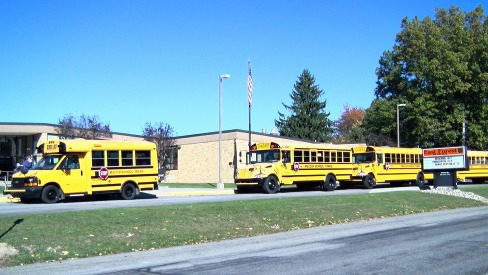 The funding derived from national forest revenues, including fees and the sale of timber harvested on the ANF, is crucial to the school districts and municipalities in the four counties that are host to the Forest.
The funding derived from national forest revenues, including fees and the sale of timber harvested on the ANF, is crucial to the school districts and municipalities in the four counties that are host to the Forest.
The 500,000+ acres occupied by the ANF displaces private land ownership, resulting in reduced property tax revenues in these counties. Without the national forest funds paid to these schools and municipalities, they would have to cut educational programs to more than 11,000 students and forego municipal road maintenance and improvements that would benefit over 122,000 residents.
There are two pieces of legislation that authorize these payments:
1908 Act (amended) 25% Payments (selected by Elk, McKean and Warren Counties)
25% of gross receipts generated on Forest Service lands during the fiscal year is distributed to benefit public schools and public roads of the county or counties in which the national forest is situated. The annual payment is made as soon as practical after the end of the Fiscal Year (April/May). The Forest Service calculates payments and sends letters to the States advising them of the amount and of each county’s percentage of the payment based on the county’s acreage in the national forest. Currently, a 25% rolling 7 year average is used to calculate these payments.
Secure Rural Schools Payments (selected by Forest County)
This act provides for the stabilization of payments to the states due to the decline in the timber industry and the associated receipts. The provisions of the Act include three titles: Title I – School and municipal allocations; Title II – Resource Advisory Committee directed conservation/road/recreation projects; Title III – County FireWise (wildfire and search/rescue) program). This legislation provides higher payments to counties, but must be reauthorized every two years. If reauthorization is not passed by Congress, county funding reverts to the 1908 Act funding mechanism at about 60% below SRS levels.
The following school districts and municipalities rely on the USFS funding:
| School District | 2022 Alloc. (approx.) |
|---|---|
| Johnsonburg Area | $30,168 |
| Warren County | $287,756 |
| Forest Area | $512,728 |
| Kane Area | $199,454 |
| Ridgway Area | $60,017 |
| Bradford Area | $129,953 |
| Smethport Area | $23,869 |
| $1,243,540 |
| Municipalities: | 2022 Alloc. (approx.) |
|---|---|
| Elk County (25% funding): | $216,847 |
| Highlands Twp. | $86,058 |
| Jones Twp. | $31,412 |
| Millstone Twp. | $38,675 |
| Ridgway Twp. | $26,089 |
| Spring Creek Twp. | $34,613 |
| Forest County (SRS Funding): | $630,598 |
| Barnett Twp. | $14,272 |
| Green Twp. | $9,059 |
| Harmony Twp. | $4,184 |
| Hickory Twp. | $56,863 |
| Howe Twp. | $227,228 |
| Jenks Twp. | $199,481 |
| Kingsley Twp. | $112,258 |
| Tionesta Twp. | $7,253 |
| McKean County (25% Funding): | $258,665 |
| Bradford Twp. | $2,316 |
| Corydon Twp. | $82,691 |
| Foster Twp. | $707 |
| Hamilton Twp. | $59,396 |
| Hamlin Twp. | $24,178 |
| Lafayette Twp. | $36,820 |
| Lewis Run Twp. | $250 |
| Wetmore Twp. | $52,307 |
| Warren County (25% Funding): | $282,079 |
| Brokenstraw Twp. | $579 |
| Cherry Grove Twp. | $43,134 |
| Conewango Twp. | $272 |
| Deerfield Twp. | $34 |
| Elk Twp. | $16,253 |
| Glade Twp. | $5,534 |
| Limestone Twp. | $29,050 |
| Mead Twp. | $68,211 |
| Pleasant Twp. | $22,505 |
| Sheffield Twp. | $51,385 |
| Triumph Twp. | $1,934 |
| Watson Twp. | $43,168 |
| Tidioute Twp. | $20 |
“Without natural resources life itself is impossible. From birth to death, natural resources, transformed for human use, feed, clothe, shelter, and transport us. Upon them we depend for every material necessity, comfort, convenience, and protection in our lives. Without abundant resources prosperity is out of reach.” – Gifford Pinchot, the “Father of American Forestry”.
